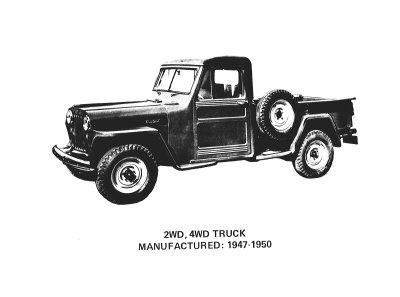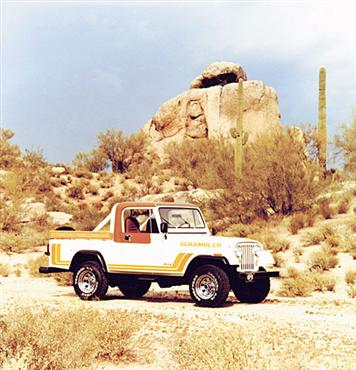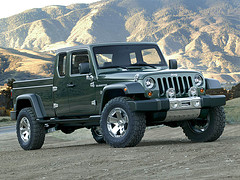Thursday, July 16, 2009
Elactric Car
Introduction To Electric Car Conversions
Can a gasoline powered car really be converted to run on household electricity? Yes, you absolutely can. In fact, why there are no local businesses offering to do these conversions for profit, I’ll never understand. I think they’d clean up, and some day, I might even try it as a new business.
Learn more about electric car conversionsat diyhomepowergrid.com
There are several different approaches you can take to convert a car to electric power from gas. In some areas of the country, there might be mechanics that will do it for a price, but you might as well try to find a new one for the amount they’ll charge you. You can buy a kit, which will run you between $2000 and $8000. These have some basic do-it-yourself instructions and most of the electrical components required. Please note that kits you purchase never include the batteries you need. Since an electric car won’t run without batteries, so figure on another $1000 or more for those.
Our favorite alternative is to use reconditioned parts you can get cheap and do the whole thing yourself. You have the choice of using a DC electric motor or an AC electric motor. AC motors are lighter and produce more power than DC. However, AC motors are much more expensive than DC. For this reason, we always opt for a second hand DC motor. There is no reason to spend the extra money buying a new AC motor for your electric car conversion when a decent DC motor that you can get very cheap (and sometimes free) will outlive just about any car you put it in.
You’d want to find a DC motor in the 9 to 13 inch range. A top speed of 50 MPH or more can be achieved with this size motor. You’ll also need a controller to manipulate the amount of current that flows from the batteries to the motor which determines how fast you go. The controller is assembled to your old gas pedal linkage for smooth control of the vehicle.
The conversion requires an on board battery charger in order to charge your batteries between trips. That way you can simply plug it in to any common AC circuit and get charged up again.
To achieve a range of 200 miles between charges, your car will need about 20 deep cycle batteries. There are a number of sources for finding these very cheap and often free. Deep cycle batteries allow you to charge more quickly and discharge further than regular car batteries normally found in gas powered vehicles. In fact, that’s why they are called deep cycle - because they will stand up to and permit greater and more frequent draining, as opposed to the battery used by gas powered vehicles. Deep cycle batteries can regularly be discharged down to 30% or so, but that’s just about the limit.
Don’t forget to balance the battery capacity against the space available to hold the batteries in the car. For example, if your project will require 20 batteries, you want to be certain there is room enough for 20 batteries. Common sense, I know, but still - you might be surprised how many people overlook this detail.
If you are planning to complete your own electric car conversions, you can find more information on our site including the best type of car to use.
4x4 Truck Tires- Misconceptions
One of the common misconceptions is that there is not a large variety of 4x4 truck tires. But there are. The kind of tire you choose depends on the specifications of your 4x4.
For example, if you have lifted the vehicle to be higher off of the ground than most vehicles, you need larger tires to support the extra height.
If you want to put lifts on your truck and if you want to put very large tires on it, remember that changing the tires on the lifted truck may not be as easy as it would be on a 4-door sedan.
If you plan to change 4x4 truck tires by yourself, enlist the help of a professional or a friend.
The 4x4 truck tires you choose will depend a lot on what you want and what best suits your vehicleCamping Ideas With 4x4 Truck
4x4 Truck Camping Ideas

Tent
One of the more popular and inexpensive methods of 4x4 truck camping ideas is to utilize a tent specially made to fit on top of the bed of the truck. Then tent basically covers the top sides of the truck to the cab and then back to the tailgate---allowing plenty of camping space for two to four campers. The tent is made from waterproof canvas material and rises up to 6 feet above the truck floor to allow for standing. Windows and a door provide function and ease of use. Inside pockets and breathable port holes allow for storage and breathability within the tent. Some tents are designed to be set up on the ground with an attachment that connects to the tailgate of a cabbed truck. This offers extra space and privacy for the campers.
Cab
A cab is a popular camping option for 4x4 truck campers. The cab basically sits on the top of the truck and is secured with metal pins and bolts. There typically isn't a lot of room for standing in a cab---it is basically an area that provides a place to sleep and store camping equipment. There is plenty of room for a double-sized air mattress and sleeping bags.
Cab Trailer
Cab trailers are a step up option from a traditional cab. The cab trailer often rises above the cab of the truck and offers an extended camping option using the bed of the truck. Many are large enough to sleep eight people and offer a wealth of extra features. Some features include water and sewer hook up, a small working kitchen, dining area, bathroom and an extra sleeping area. Cab trailers do not require any extra hauling or transporting and fit securely on the top of most trucks. The interiors are strikingly similar to that of a travel trailer or RV.
Pop-up
Pop-up truck campers are similar to regular pop-up campers that are towed behind a vehicle. They rest on top of the truck bed and appear to be a cab. They are then cranked up, allowing campers to enjoy the benefits of a full-sized camper. The area that is cranked up is typically made from durable canvas and extends the living area by a few more feet. Inside, there is a kitchen, living area and pull out beds. There is also water and electrical hook-up. A pop-up is a good choice for those who enjoy remote camping. The truck can reach any destination without having the drawback of pulling a large camper or pop up---this avoids the rig getting stuck or bottoming out in wet or low-lying areas.
Truck Bed
One other option is to use the truck bed itself as a sleeping and storage area. As long as an air mattress, blankets and other adequate cushioning is implemented This is a great way to spend the night au natural, under the stars. During the day, the sleeping area can be cleaned up and a small portable table can be placed on the truck bed, allowing for a nice dry location for eating or doing other activities.
4x4 Truck - The Jeep
The Jeep 4x4 Truck: Yesterday and Today!
Is the Jeep 4x4 truck dead and gone? On the streets we are seeing fewer and fewer older models. And where are the new model 4x4 trucks?
>>
The short answer is that Chrysler/Jeep has not built a production pickup truck since 1992 when the great (my bias)Jeep Comanche series was retired.
So as the last of the Comanche's (pun intended) and the other older Jeep trucks get even older, attrition will reduce the numbers every year.
So hang on to and take care of that old Jeep truck. They can only become rarer (and maybe more valuable) with time.
Do you have a Jeep Truck?
Then tell us about it..
Click here!
How old is old? Beginning around 1947 the Willys-Overland Company produced a two-wheel drive (discontinued after 1951) and a four-wheel drive pickup truck. Variations of the 4x4 truck models were built into 1965.
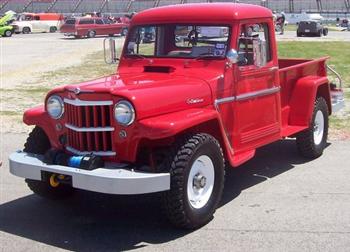
(Above and Below) A beautifully restored 1962 Willys Pickup as seen at the Texas Motor Speedway Car Show 2008.
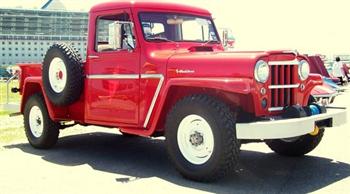
Other Jeep truck (pickup) versions included some of the "Forward Control" models which featured a cab-over (similar to todays vans) style with various cargo bed arrangements such as flat-beds, stake-beds, dump-beds, closed beds and standard pickup style beds.
These 4x4 trucks were produced from about 1957 through 1965. Take a closer look at the Jeep Forward Control 4x4 truck...here!
A few years before the demise of the Willys pickup and Forward Control the original Gladiator pickups were introduced beginning in 1963 and produced through 1970.
The Gladiator's were constructed almost entirely on the Wagoneer platform and came in various designations using the "J" prefix (i.e. J-200 to J-4000).
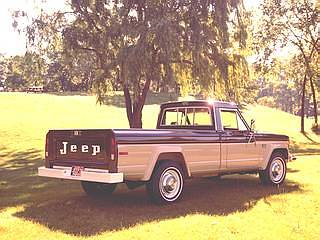
Jeep J-20 Pickup
Around 1970 American Motors Corporation (AMC) purchased Jeep from Kaiser and continued the J-Series pickups (J-10 and J-20) again sharing most of the Wagoneer platform with few other changes.
In 1976 AMC took a crack at producing a cool factory customized J-series pickup called the "Honcho" which has become quite a rare find today.
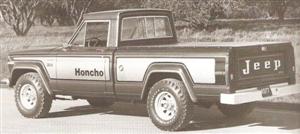
1977 Jeep Honcho Pickup
1982 Jeep Scrambler CJ8...Click on the picture to learn more!
The J-series pickups were discontinued in 1987 when Chrysler purchased Jeep from AMC.
Finally, in 1986 a new Jeep truck style called the Comanche emerged from the base platform of the relatively new SUV Jeep Cherokee XJ.
The Comanche is my personal favorite, not just because I have an original 1987 4x4 long-bed, but also because being a "midsized" pickup it was an alternative to the full-sized monsters coming out of Detroit at the time.
(Click here to see my Jeep Comanche and more)
Chrysler axed the Jeep Comanche pickup in 1992 primarily because of not-so-impressive sales, but Chrysler also had the successful mid-size Dodge Dakota available in two- and four-wheel drive which may have influenced there final decision as well.
Are you proud of your Jeep Truck?
Then tell us about it..
Click here!
Off road trucks are in big demand for everyone from the contractor to the enthusiast these days.
(Click here to see more on this Jeep Gladiator Concept pickup!)
Over the past few years Jeep has toyed with some "Concept" Jeep trucks with some promising models possibly on the horizon. These beauties could satisfy those wanting a 4x4 truck for use as "workers", off road trucks...or just to have a really cool Jeep to fulfill that Jeep Mystique.
But I would humbly caution Chrysler/Jeep to not over-price or over-equip whatever they produce for Jeep now and in the future, as they have priced many enthusiasts out of the market.
A really back-to-basics, reasonably priced model with all the ruggedness expected, but fewer frills would be appreciated by many including myself.
Go ahead and built the "posh" models for those who want and can afford them, but please don't forget the average "Joe"...or Larry in this case...who love Jeeps for their simplicity and function.
We can always add to them later!